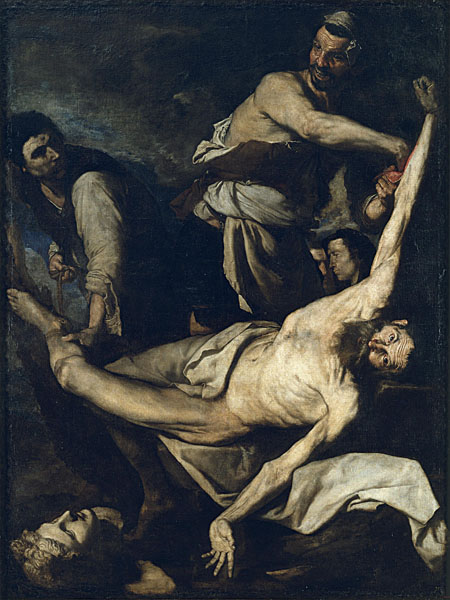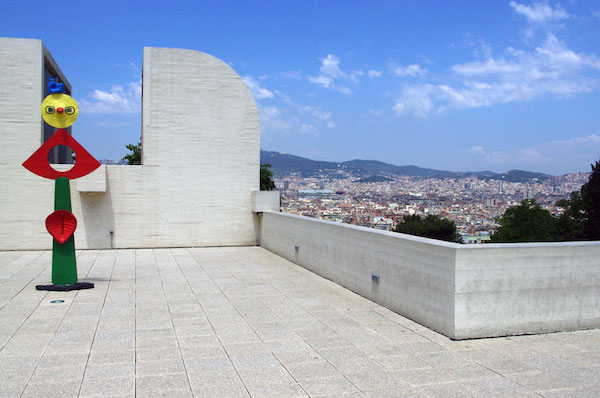It’s hard to miss the MNAC.
Towering over the Plaça d’Espanya from the hill of Montjuïc, the Museu Nacional d’Art de Catalunya is one of the architectural icons of Barcelona. That said, it doesn’t always feature on the itineraries of visitors to the city, not making the cut of the ten most visited attractions in the city. If you want to discover the history of Catalan culture, though, there are few better places anywhere in the world. As Catalunya’s national art museum, its collections span over a thousand years, from medieval churches to Gaudí. Come with us as we take you through the highlights of the MNAC.

Photo Credit: Martin Abegglen, Text Overlay: Devour Barcelona Food Tours
Getting (up) there
To get to the MNAC, one way or another you’re going to have to climb Montjuïc. Don’t worry though: take the metro to Plaça d’Espanya and you’ll be greeted by escalators taking you all the way up to the museum. If you’re wanting to explore the area nearby, the funicular railway from Paral·lel is a quirky way to get to the top of the hill, with fantastic views along the way. The museum opens from Tuesday to Saturday from 10 a.m until 6 p.m, and on Sundays until 3 p.m. Entry is €12.
Insider’s tip: If you’re on a budget, the museum is free every Saturday from 3 p.m. Needless to say, this is when the museum is at its busiest, so if you’re looking to avoid the crowds, it’ll cost you.

What not to miss
The first highlight of the MNAC is apparent before you even arrive: the view! Even from the outside, the museum’s privileged position offers spectacular views over Barcelona. Head to the rooftop, though, for an even better perspective. Once you’ve caught your breath, it’s time to dive into Catalan art.
For many visitors, the MNAC’s most spectacular highlights are actually its earliest pieces. On the first floor you’ll find the world’s finest collection of Catalan Romanesque art. Huge, colorful, and utterly distinctive, these frescoes and altarpieces were removed from remote Catalan villages in the 1920s and taken to Barcelona for preservation where they formed the basis of this museum’s original collection. Now, they offer visitors a unique opportunity to discover the art of the valleys of the Pyrenees without leaving Barcelona and are some of the true MNAC highlights.
From here, you can follow the story of Catalan art from the Gothic through the Renaissance. The museum hosts works by masters including Velázquez, El Greco, and Zurbarán. Don’t leave without seeing José de Ribera’s masterpiece The Martyrdom of Saint Bartholomew. Bartholomew stares directly towards us as he’s tortured, making for a disturbing but powerful artistic experience.

For many, the MNAC’s other great highlight are its modern collections. Reorganized in 2014, the first floor galleries take the story of art from the middle of the 19th century through to the end of the Spanish Civil War. This is where you can discover the cultural movements and artists that inspired Picasso, Gaudí, Dalí and Miró. This was when artists like Casas and Rusiñol would gather in the Els Quatre Gats tavern to debate the latest artistic developments across Europe, and the museum’s collection is particularly strong in this period.
Exploring Montjuïc
Once you’re done with the MNAC, you’re perfectly placed to explore the other attractions of Montjuïc. The nerve center of the 1992 Olympic Games, it’s a hub of architectural and artistic gems away from the crowds in the city center. If the MNAC got your modernist juices flowing, the Fundació Joan Miró has an outstanding collection of paintings, sculptures and prints by one of Spain’s 20th century masters.

Nearby you’ll find Santiago Calatrava’s telecommunications tower, one of the iconic images of Barcelona’s Olympics. Architecture nerds can’t miss Mies van der Rohe’s Barcelona Pavilion, one of the key works in the development of modernist architecture. Finally, the Montjuïc Castle has great vistas over Barcelona’s harbor: the perfect place to catch the last rays of the sun after a day exploring the city.